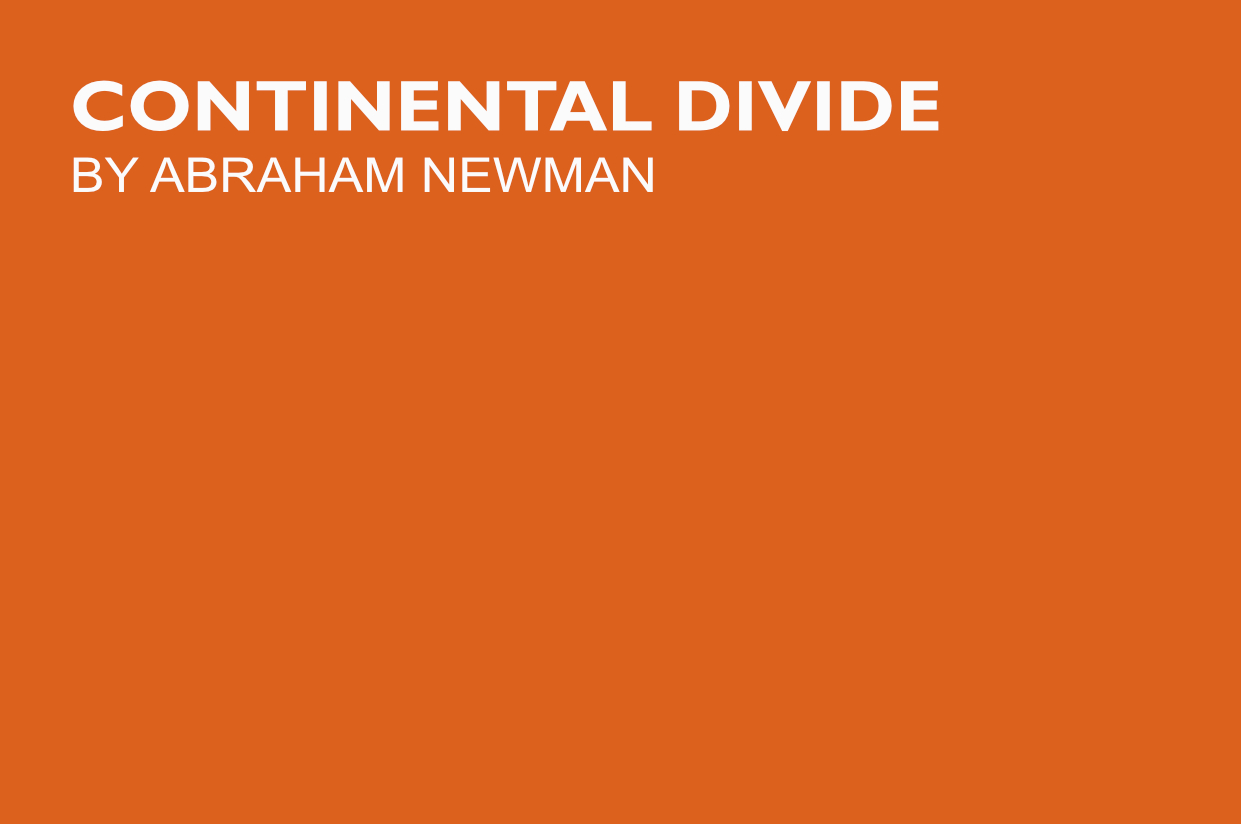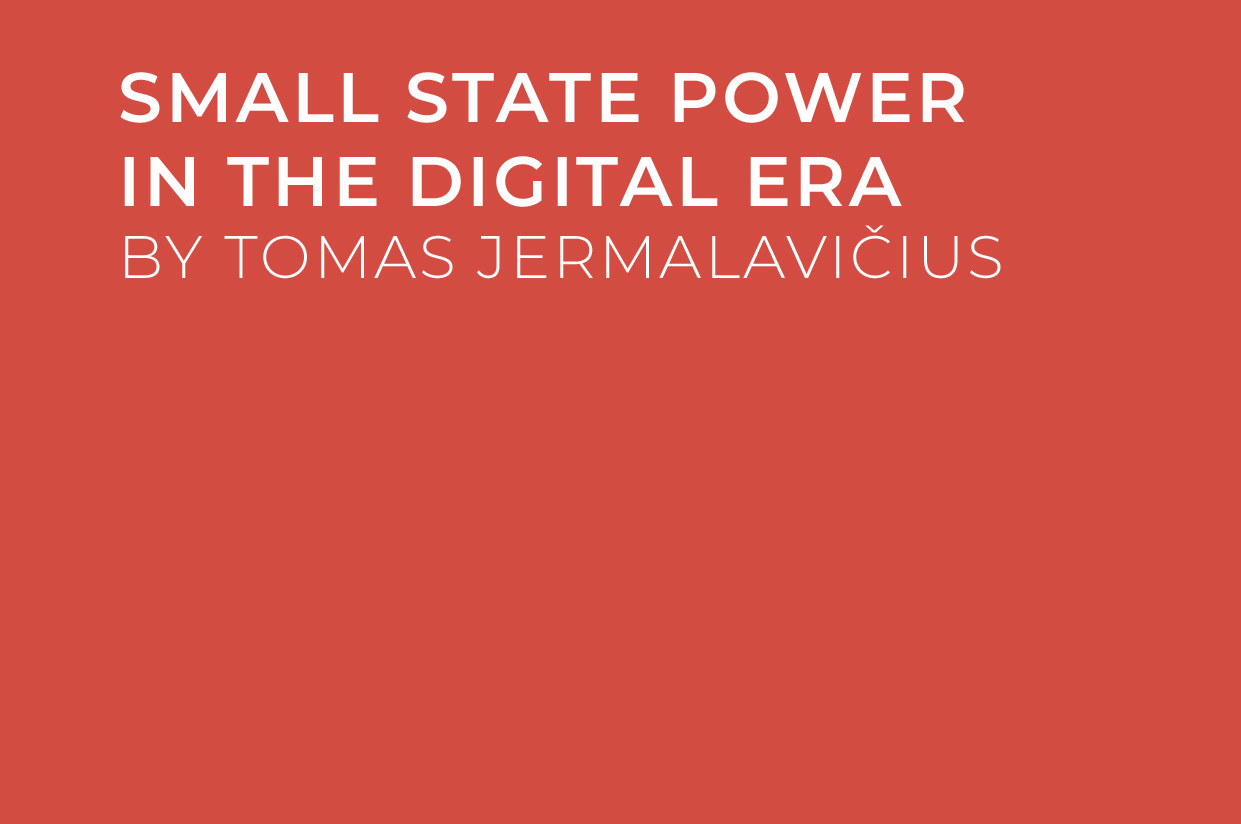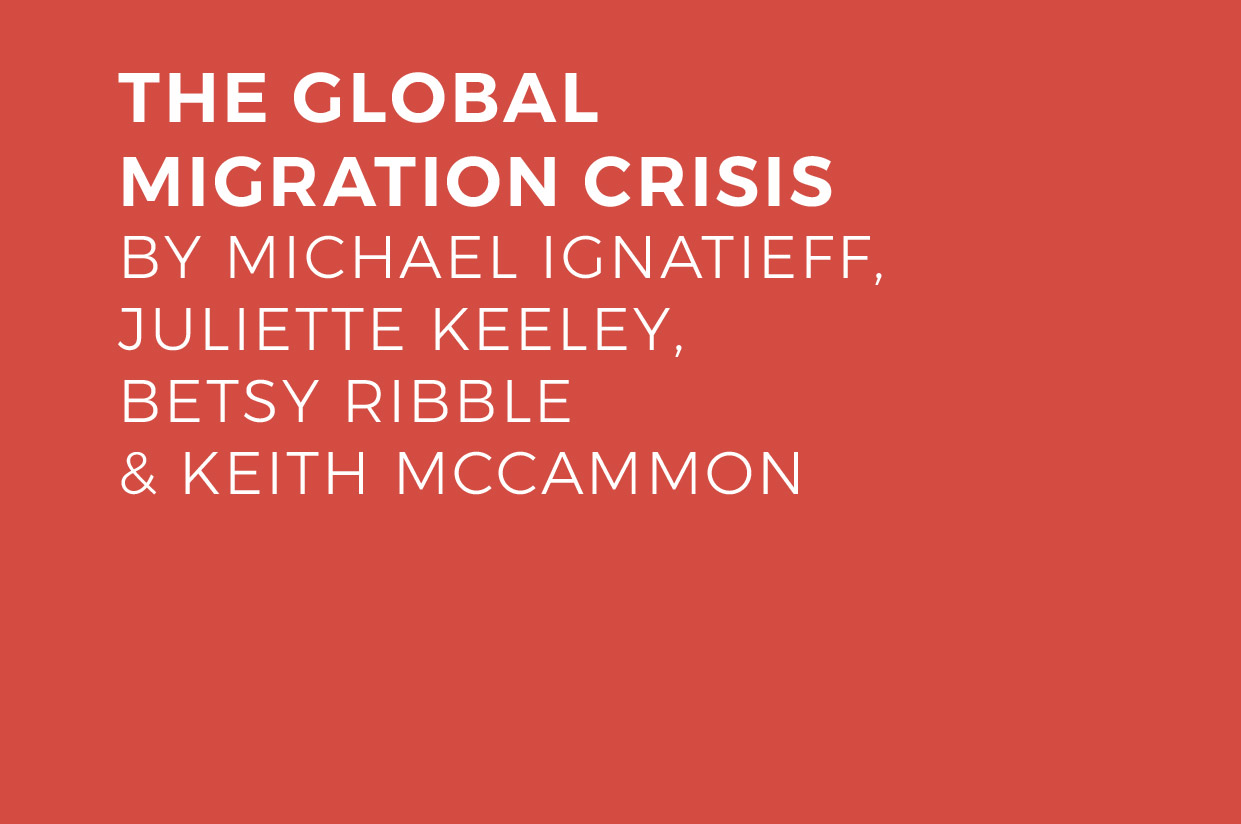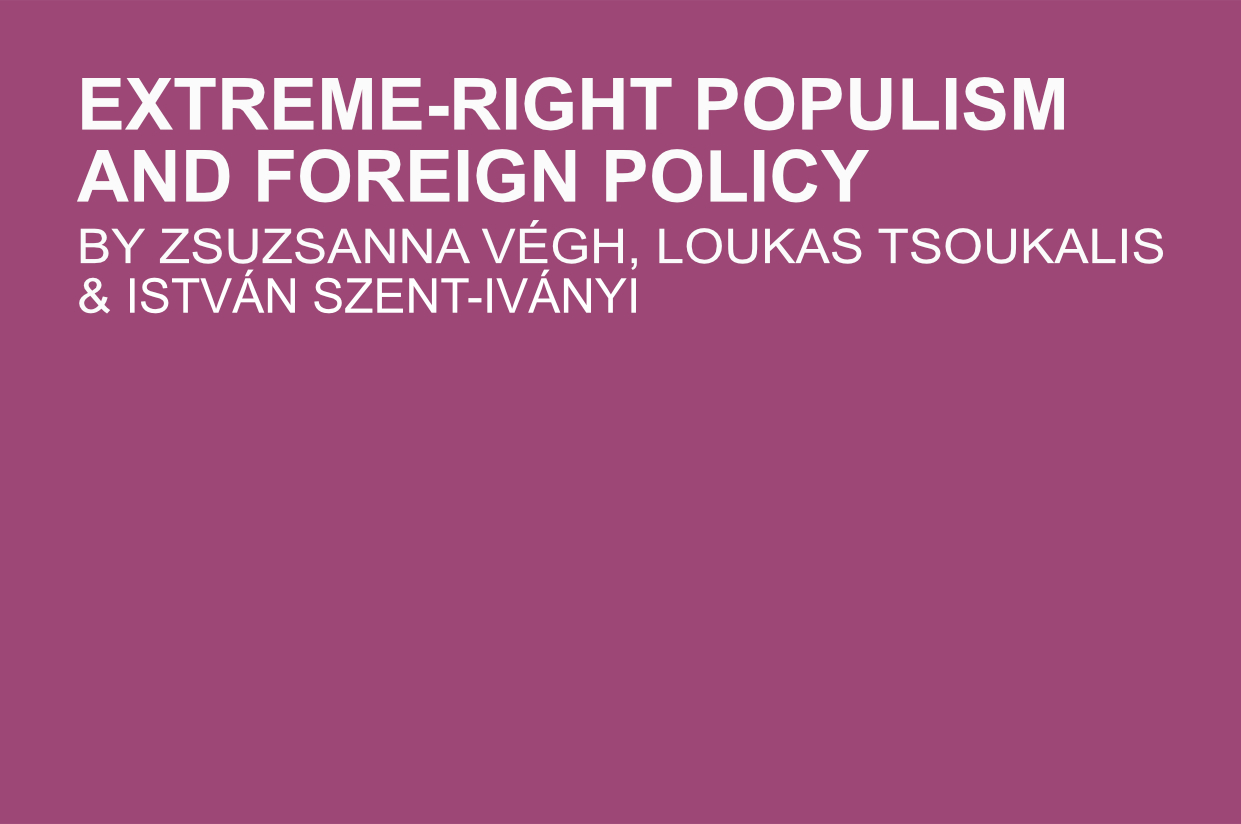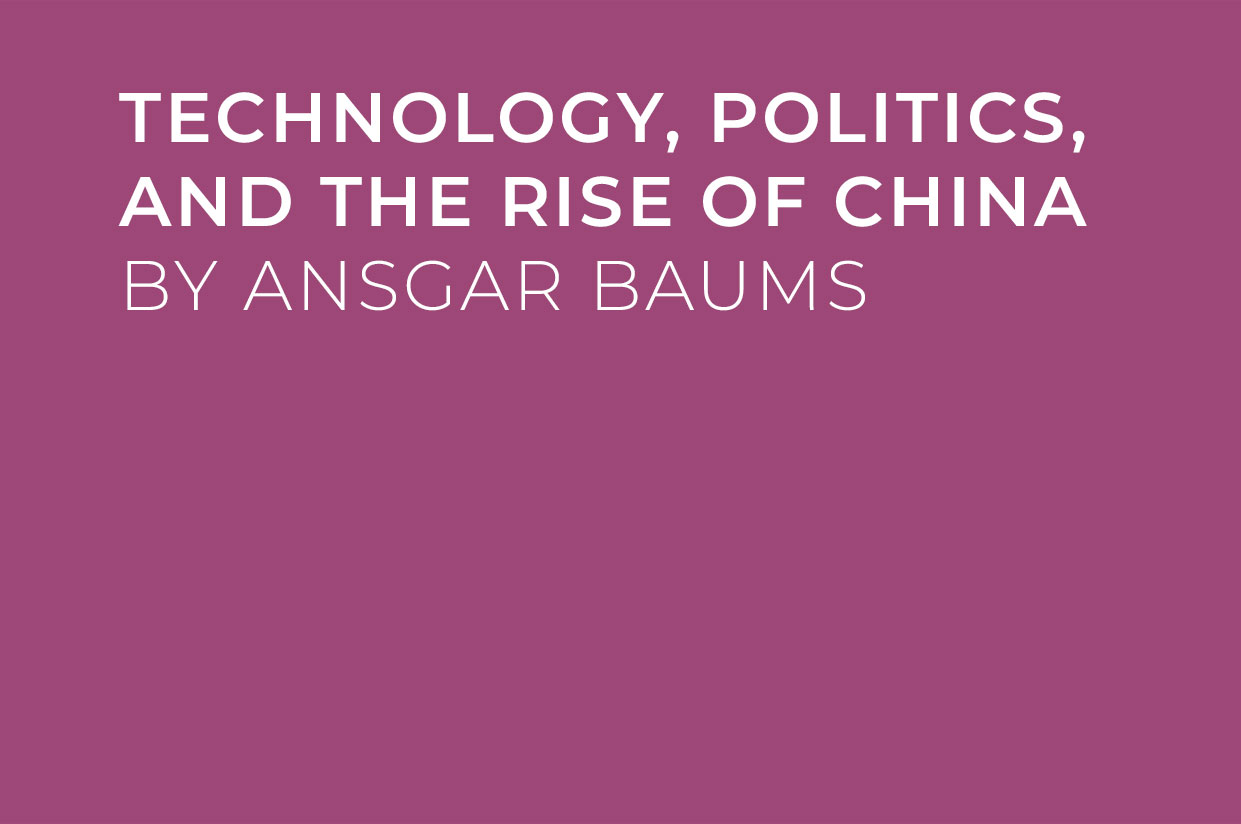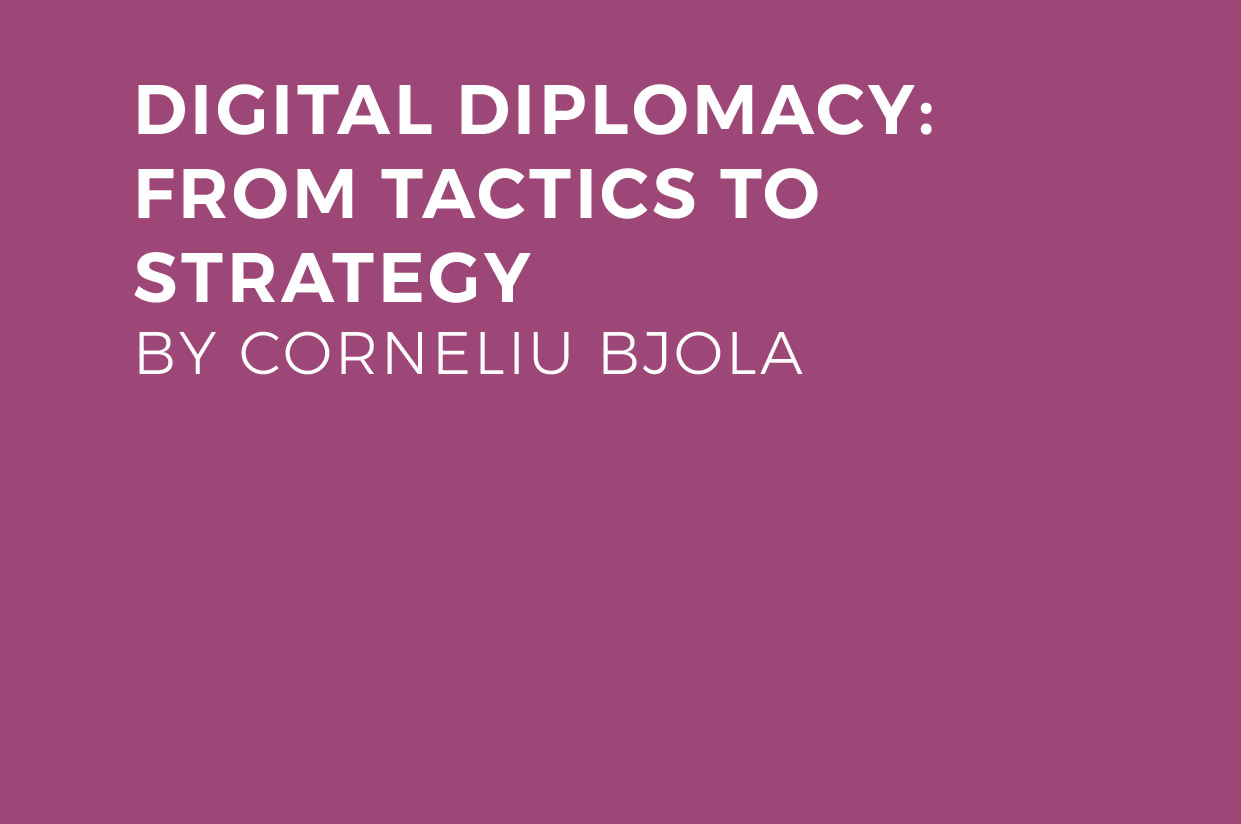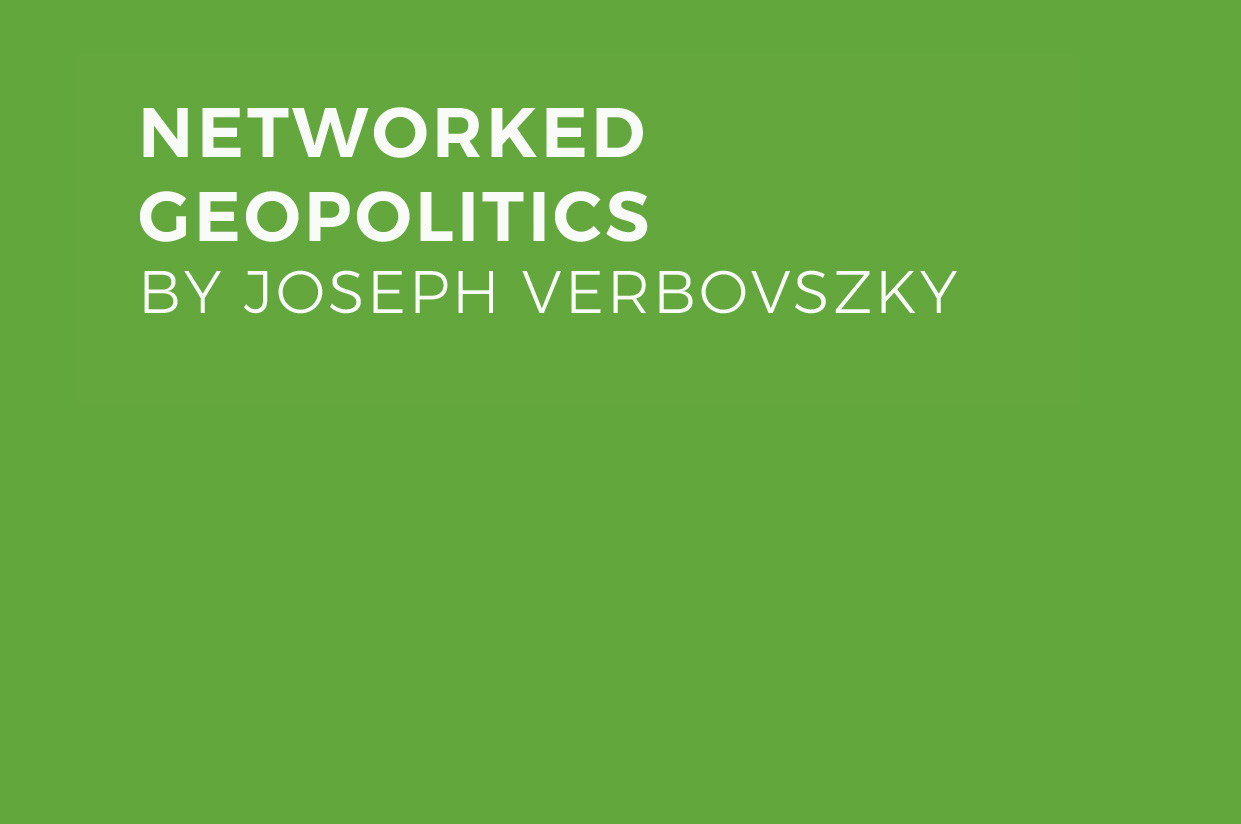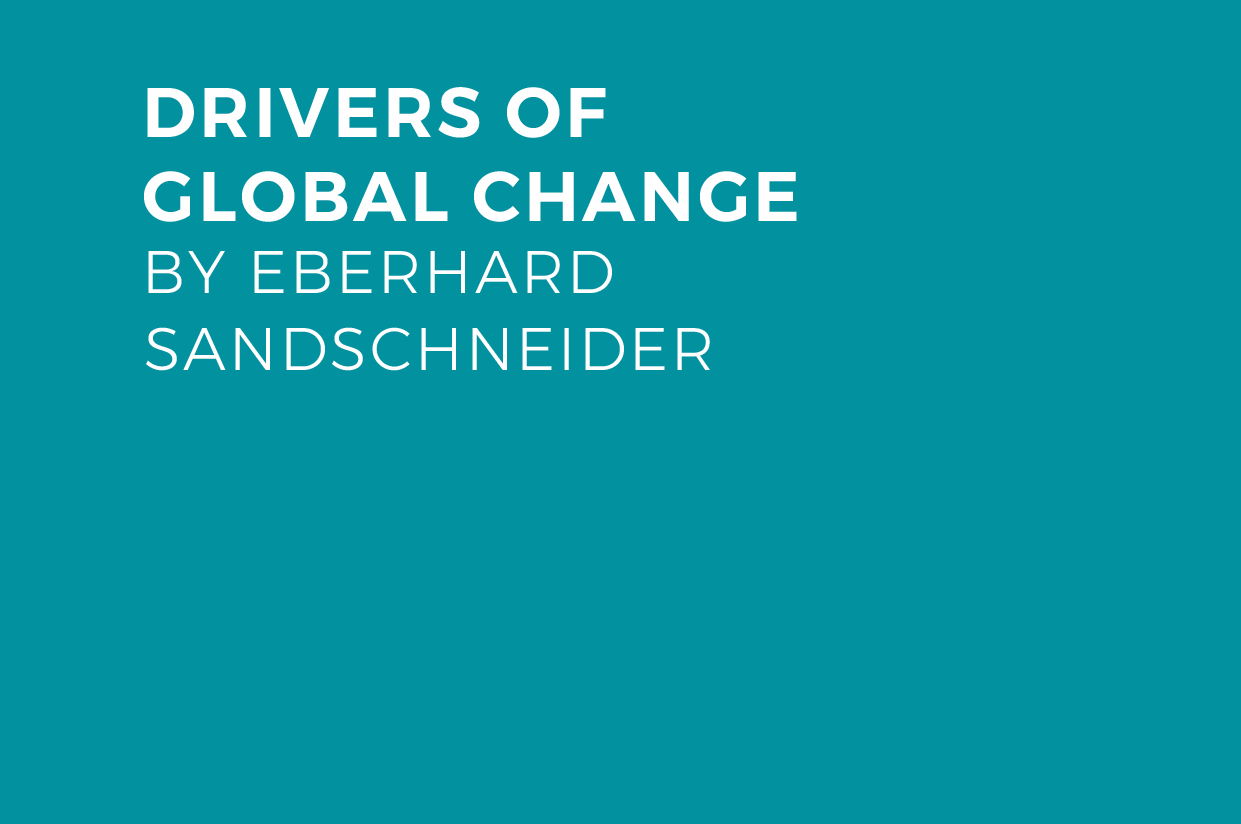
Drivers of Global Change
What happens when digital disruption meets geopolitics?
By Eberhard Sandschneider
In recent years, black swans seem to be everywhere. No wonder, then, in the face of cumulating crises and unexpected shocks, the debate about the state of global affairs has been gaining momentum. Uncertainty and unpredictability seem to prevail. Asymmetric security risks, conflicting economic interests, growing social cleavages, and the unpredictable effects of digitalization add up and require new approaches to managing global risks.
The current world order is falling apart, and it is challenging political and business leaders alike. This paper offers a perspective on the core drivers of these developments. It argues that the post-1989 world order is in an interstitial stage of transformation; it is characterized by the rise of new powers and the relative decline of established powers. Perhaps more importantly, these developments are driven, inspired, and accelerated by two major trends in change: geopolitical ambitions and digital disruption. That we must deal with both of these trends against the background of accelerating complexity is clear. Though the solutions are less obvious, they will be decisive factors in the future global order that is still taking shape.
Moreover, the developments arising at the crossroads of both of these trends will be decisive for the future performance of all political systems—democracies and autocracies alike. Nothing is given: neither the survival of democracies, nor the persistence of autocracies. Both democracies and autocracies still operate on the basis of enduring political structures, decades old and unable to absorb the exponential increase in technological change. Creating and maintaining legitimacy, as a requisite of political stability, provides a fundamental challenge to both types of political systems. What at first may seem Darwinistic translates into numerous fundamental challenges to be discussed below.
First, we will look at major aspects of the world order presently undergoing a transformation. After a brief analysis of both geopolitical trends and expected impacts of disruptive technologies, we turn to the core question of what happens when geopolitics meets digital disruption.
Towards a Polycentric World Order
Ever since the end of the Cold War, global power structures have encountered major changes. In 1989, the third breakdown of global order in the twentieth century (after 1918 and 1945) did not lead to a major restructuring of global institutions. The combination of democracy and market economy seemed to form the conceptual basis for economic and political success well into the twenty-first century. Nearly three decades later, things have turned out to be fundamentally different. Contrary to the high-flying hopes of 1989-90, about the beginning of an era of Western supremacy after the defeat of communism, the vulnerability of Western democracies has been continuously rising, leading to insecurity, growing economic uncertainty, intensifying social unrest, and a potential domestic destabilization in many countries hitherto regarded as unshakable.
Today, we realize that the world order we believed victorious in the Cold War has been subtly dissolving over the last two and half decades. This process has reached a point where we must acknowledge that yesterday’s bipolar order is being replaced by a world order many regard as multipolar. Indeed, multipolarity is often praised as the solution to pending difficulties of military, economic, and political cooperation. Things may, however, turn out to be different—and much more dangerous.
It is not only the usual suspects—the USA, China, Europe, and perhaps Russia—might form the backbone of a future stable world order. Many other regional powers are increasingly acquiring the capacities to irritate existing power arrangements. Asymmetry and the negative effects of globalization form the background of a transformation that, in the end, might produce a polycentric world order.
Polycentrism means that actors traditionally never counted as important players in international relations have developed the capacity to influence global relations in an unexpected and overproportional way. Power centers thereby multiply and add to the plethora of new risks and challenges. Emerging economies form the core of these new power brokers, while disruptors like North Korea, Iran, Saudi Arabia, and perhaps even countries like Venezuela and Qatar are further examples of this type of newly influential actor. And, of course, the traditional power-brokers—former global or regional hegemons (such as China, Russia, the US)—are still around and unwilling to be replaced in their power positions.
The challenge lies exactly in this polycentric structure of a global and networked world. How do we manage a global order that has a dozen or more regional power centers, all in more or less open competition with one another? By definition, structures that are hegemonic, bipolar, or limited-multipolar are easier to control and can be kept more stable at lower costs than the almost incalculable effects typical of polycentric structures. Unpredictability is not only a characteristic of Donald Trump, it also applies to the upcoming new world (dis-)order. Polycentrism is nothing to hope for; it is the problem, not the solution.
These structural changes in global politics can only be understood properly if the mutually enforcing effects of two dominating trends of our time are taken into account: developments that reinforce each other at the crossroads of geopolitics, and digital disruption.
Where both trends intersect, they create a jolt to traditional thinking that will help create a new set-up of power and order in a networked world. Wherever they clash or collide, they will change the face of global politics deep into the twenty-first century.
Geopolitics and the Transformation of Power
Geopolitical thinking was a defining element of the containment policies characteristic of the Cold War period. Today, we have to face the consequences of new forms and levels of competition between global powers, which are typical of intensified geopolitical competition. Here’s the most prominent example: While President Trump declares his intention to “make America great again,” his Chinese counterpart, Xi Jinping, has proclaimed the same ambition for his own country—calling it, more mildly but certainly no less decidedly, the “Chinese Dream.” Both presidents underline their respective ambitions to compete for global dominance. But whereas the American president prefers to concentrate on the “US alone,” seemingly negligent of major aspects of America’s global interests and ambitions, his Chinese counterpart does precisely the opposite.
China’s Silk Road initiative—One Belt, One Road (OBOR)—is a clear indicator of these ambitions. Interestingly, China seems to be concentrating on a Eurasian, land-based strategy to balance the US dominance of the oceans. But China also concentrates on cyber and space in order to improve its asymmetric capacities of power projection. At a closer examination, OBOR is more than just a twenty-first century version of the traditional Silk Road. Instead, it is a highly ambitious network of land- and sea-based lines of connectivity that are based on infrastructure. It also entails markets, value chains, strategic partnerships, and, not least, security aspects that stretch from the Chinese Pacific coast to the European shores of the Atlantic. In other words: OBOR is China’s geopolitical strategy to outmaneuver the USA, the West, and any other competitor on the country’s path to global leadership.
China’s focus on the Eurasian landmass is just one indicator that, despite all aspects of globalization, geography still matters and competing geostrategic interests are core drivers of conflict. At the same time, the scope of OBOR’s ambitions underlines the need to understand new mechanisms of power.
“Comprehensive Power”
While many geopolitical debates still refer to “power” as traditionally defined, the effects of digitalization have a complementary effect: power is morphing into a more complex set of determinants. Though power and interests remain the major driving forces of nation states even in the twenty-first century, power currencies—the basic ingredients of the credibility and exertion of power—have been undergoing dramatic change.
Power used to flow predominantly from military capacities. Today, other factors form the basis for global impact: economic performance, innovation capacities, financial stability, market size and access, political and social stability, and digital- communication capacities. In order to grasp the geopolitical shifts of our time, the traditional understanding of power has to be extended towards a notion of “comprehensive power,” formerly not regarded in a security or power perspective. This argument is augmented by the fact that communication is becoming an ever more important part of political power—both in its domestic and global effects. What traditionally used to be propaganda has morphed into media control, hacker attacks, and fake news. Indeed, communication technologies are bridging the gap between traditional power arrangements and the growing effects of digital disruption in other parts of politics and society.
Digitalization and the Effects of Disruption
“Digital disruption” has become one of the most favored catchphrases of our times. Driven by exponential change, nearly all aspects of human life left will be directly or indirectly affected by digital developments that are at once easy to describe but difficult to assess and understand. Most experts on digital technologies agree that their impact on human development will be as decisive as the invention of language, printing, or electricity.
Beyond the individual level, policies that will be mostly and fundamentally affected by digitalized technologies run the spectrum of human life: food production and nutrition (GMO), environmental protection, energy production and storage, water supply, security, health, disaster relief, communication, learning, and, last but not least: all aspects of global, national, and local governance. In all these fields, disruption will challenge existing structures of decision-making. Permanent upgrading, sharing, filtering, and interacting in a hitherto unprecedented way will fundamentally influence the functionality of traditional political and social institutions. It is exactly here where new forms of power and their digital drivers demonstrate their explosive impact.
The debate about digital disruption is driven by an extreme amount of semantic overlap and technological uncertainty. In Silicon Valley, representatives of tech companies pretend to be able to change the world for the better—if only the world was willing to listen. Tech optimists concentrate primarily on the potential positive effects, neglecting the negative consequences any technology might lead to if misused by perpetrators of ill intent. The world is thus ever more skeptical about the loss of jobs due to robotics, the loss of human control due to artificial intelligence, and the loss of reliability due to the growing speed of complexity, not to mention risks like terrorism and cyber-attacks, which take advantage of these new technologies. Concerns that data and algorithms might have disrupting effects are an integral part of the big hopes for a technologically improved future.
Of course, in the Schumpeterian sense, technological innovation could be a highly welcome instrument to promote economic development. Certainly, any technology today, as in the past, has both strengths and downsides. And it is exactly these downsides that are responsible for the negative effects of rogue players, protectionists, populists, and nationalists who pretend to offer simple solutions for highly complex problems and their effects.
Managing accelerating complexity thus becomes a preeminent task for political and economic actors around the world. Both geopolitical and technological changes are inspired by speed. Reaction time to crises and unforeseen events is practically zero, adding to the strain of making the right decisions at the right time. That’s the big difference between the past and the present: unprecedented acceleration caused by digitalization has become the primary factor for understanding and managing global risks.
In Need of Adaptive Capacities
The widespread belief that politicians will be able to better foresee upcoming events with the help of digital technologies, especially big data, is also an illusion. This is one of mankind’s oldest wishes: to foretell the future. Most likely, it will come to pass. While technologies may soon be able to predict individual human behavior and derive successful marketing strategies, the same expectation does not necessarily apply to global developments. Polycentrism does not permit for the prevention of unpredictable shocks.
It is understandable that foresight exercises, scenario-building workshops, and trend forecasting are very much en vogue. Finding signals in a sea of noise à la Nate Silver has become a mission for media consultants, think tanks, and intellectuals the world over. Individuals and leaders alike seek increased orientation, and spend a lot of money and energy on the desperate attempt to forecast the future so that they might make the right decision in the present. While thinking outside the box—via alternative expectations and strategies—is a permanent necessity in times of upheaval, accelerating complexity turns the future into a permanent present. Exponential developments transform possible events tomorrow into real risks and opportunities today. A reversed strategy might make more sense: instead of desperately trying to forecast future risks, a more promising strategy should be to train and strengthen present reaction-capacities, adaptability to unexpected developments, and attempts to improve sustainability and resilience.
In a world driven by accelerating complexity at the crossroads of digital disruption and geopolitics, the core ingredients to maintaining social and political order are speed, resilience, and adaptability to exponential change. Whether democracies are best prepared to meet these challenges is one of the biggest challenges of our times. Few things are certain in this respect. As the strategic thinker and technologist Banning Garrett writes: “The worlds of 2025 and 2035 are likely to be discontinuous with the present, especially as a result of new technologies such as artificial intelligence and robotics, which will be applied to a huge variety of businesses and other technologies as AI becomes a utility and the world is wired up by the Internet of Things. These and other technologies will be hugely disruptive throughout society, from the lives of individuals to the fate of businesses, the restructuring of cities, and the activities and organization of governments.”[1] Societies and governments seeking to respond effectively to these challenges will have to develop new adaptive capacities to use the positive and mitigate the negative effects of these developments.
For both democracies and autocracies, the basic rule is simply this: only change provides stability and survival. While democracies have been much better than any other type of political system to manage these challenges, there is no guarantee for the future. Caught between the Scylla of authoritarian competition and the Charybdis of popular dissatisfaction with the output performance, democracies will have to deliver convincible solutions if they want to survive in a polycentric world. Many may not like the idea, but performance and efficiency will be more important in the future than legitimacy, mass participation, and a rules-based decision-making system were in the past.
Based on these considerations, four core challenges, explained below, stand out as drivers of global change. As they originate at the crossroads of geopolitics and digital disruption, the strategies to deal with them will be decisive factors for the positioning of nation states, the survival of political systems, and framing of the upcoming world order.
1) Competition for the rules of the game
- The competition over rules of the game (starting with trade, but also affecting security, development, climate, etc.) is gaining relevance as a direct effect of the world order’s morphing towards polycentrism. China certainly is the first and foremost candidate to challenge Western values and rules. But China is not alone: Russia, India, Brazil, and many others also want to have their share of global decision-making. And none of these countries is automatically willing to accept the rules, values, and interests of the West (if the latter still exists at all). As one Brazilian diplomat put it, “If you do not give us a seat at the decision-making table, we will build our own tables.” The process of alternative institution building is in full swing. The Asia Infrastructure and Investment Bank (AIIB) is just one prominent example demonstrating how China is challenging the supremacy of the West by creating institutions in competition to Western dominated IMF and World Bank. In the field of security cooperation, the Shanghai Cooperation Organization (SCO) demonstrates a similar purpose. There is no guarantee that Western rules and values will prevail in this competition.
2) Understanding the importance of value chains
- A second challenge rarely mentioned in this context: the management of value chains, based on free trade and open markets, will gain importance—despite President Trump—and not only in an economic but also a geopolitical perspective. In this respect, China is rapidly moving into a leading position and again OBOR may serve as the most striking example. The ultimate goal of the Belt and Road Initiative is the establishment of global value chains. This initiative attempts, as Bruno Macaes writes, “to create a set of political and institutional tools with which China can start to reorganize global value chains and stamp its imprint on the rules governing the global economy.”[2] And China—as initiator and promoter of the strategic concept—is uniquely positioned to use OBOR in order to pursue its own interests. What we may see here are the first steps towards a transnational industrial policy. The competition for the best model of regional integration has already begun—without the EU even realizing it has.
3) The need for continuous innovation
- On the micro-level, capacities of innovation will be the major driving forces of global power. Based on a new and comprehensive understanding of power, future great powers will have to live up to the requisites of innovation and technology. Access to innovative capacities will be a decisive factor for the positioning of nations, while innovation cycles are becoming shorter and shorter, again challenging the adaptability of political systems and their capacities to regulate (mostly exponential) technological progress.
4) Seeking identity despite growing complexity
- Finally, providing orientation in an ever more complex world, based on identity, history, and culture will be a challenge for political stability and successful statecraft in all types of political systems. Here, democracies still may have advantages, but those who offer simple solutions are actively challenging the very basis of (not only) Western values: racism, nationalism, ideologies, and, last but not least, fundamentalist religions, are thus undermining the foundations of a rules-based global order.
In sum, the world will have to live with unstable structures, increasing volatility, and likely also a further decline of global, regional, and national security. The answer to managing these new global risks will not be found in a new grand strategy of whatever origin, but rather in the willingness and ability of decision-makers to pragmatically deal with risks as they arise. Pragmatism is perhaps the only answer to geopolitical upheaval and digital disruption.
[1] Banning Garrett, Technology’s Impact on Jobs. Manuscript, August 2016, p. 45.
[2] Bruno Macaes, China’s Belt and Road: Destination Europe, Carnegie Europe, November 9, 2016.
Eberhard Sandschneider holds a chair in Chinese politics and international relations at Freie Universität Berlin. Between 2003 and 2016, he was Otto Wolff Director of the Research Institute of the German Council on Foreign Relations (DGAP). His books include Globale Rivalen: Chinas unheimlicher Aufstieg und die Ohnmacht des Westens (Global Rivals: China’s Uncanny Rise and the Helplessness of the West, 2008) and Der erfolgreiche Abstieg Europas: Heute Macht abgeben um morgen zu gewinnen (Europe’s Successful Descent: Giving Away Power Today in Order to Win Tomorrow, 2011).
© 2017 American Academy in Berlin. Responsibility for the information and views set out in this article lies entirely with the author. Reproduction is authorized provided the source is acknowledged.




